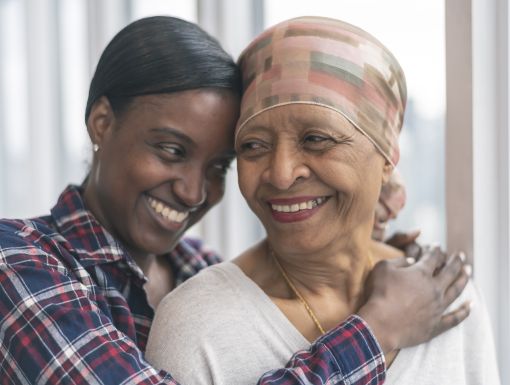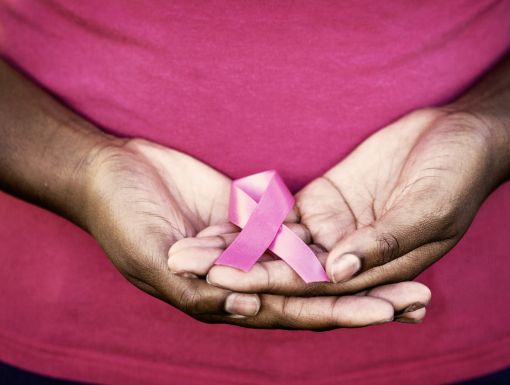
Breast Cancer and Men
When we think of breast cancer, we typically imagine it as a disease that only affects women. However, although it is rare, breast cancer does affect men, too. About 1 out of every 100 of breast cancer cases diagnosed in the United States are found in men. We’ll share some of the common types of breast cancer in men, what breast cancer symptoms men should be aware of and which factors put men at risk.
Common types of breast cancer in men
Both men and women are born with a small amount of breast tissue. While women’s breast tissue becomes more developed after puberty, men still have a small amount, making it possible to get breast cancer. Most breast cancer cases that occur in men are typically diagnosed after 50 years of age. The most common types of breast cancer in men are like the most common types found in women and include:
- Invasive ductal carcinoma – The Most breast cancer cases in men are ductal carcinoma, which is where breast cancer starts in the milk ducts. Both male and females are born with mammary glands, including milk ducts. However, a female’s mammary glands will develop further after puberty to then be able to produce milk; male mammary glands do not develop further.
- Invasive lobular carcinoma – This breast cancer starts in the lobules, which are the glands that produce milk. This type of cancer in men is rare because men have fewer lobules in their breasts. When men do have this type of breast cancer, it spreads to the other parts of the breast tissue that are near, and it can also spread to other parts of the body.
- Ductal carcinoma in situ – This is a type of breast disease where cancer cells can begin to grow. In cases of ductal carcinoma in situ, the cancer cells are only found in the lining of the ducts and have not spread to other parts of the breast tissue.
Symptoms of breast cancer in men
Symptoms of breast cancer in men are similar to symptoms in women. However, because awareness and detection among men is less common, symptoms often go unnoticed, and cancer may grow and spread before it is found. Cancer detected at later stages is more difficult to treat and is associated with a worse prognosis and higher mortality rate. Recognizing symptoms early is key to the best outcome.
Common symptoms of breast cancer in men include:
- A lump under the nipple or areola
- Nipple discharge
- Changes to the skin on the breast, including redness, flaky skin or skin that puckers
- Changes to the nipple, including redness, scaling or a nipple that becomes inverted
- Nipple pain
Breast cancer risk factors for men
Several factors can cause men to be at an increased risk of developing breast cancer:
- Having a family history of breast cancer, especially breast cancer that is related to the BRCA1 and BRCA2 genes, can increase a man chance of getting breast cancer. Usually, the BRCA1 and BRCA2 genes protect people from getting breast cancer. But if you inherit a mutation in the gene, this can cause you to be at an increased risk of getting breast cancer.
- Klinefelter syndrome – Men with this syndrome have cells with one Y chromosome and two X chromosomes instead of the typical single X and Y chromosome. Men with Klinefelter syndrome typically have lower levels of androgens, which are the male hormones, and higher levels of estrogen, the female hormone, which can cause the development of benign breast growth. Having Klinefelter syndrome can increase a man’s chances of getting breast cancer by 20% to 60%.
- Estrogen treatment – Men who take medication with increased levels of estrogen are at an increased risk. Estrogen therapy was previously used to treat some cases of prostate cancer. Additionally, transgender patients who take estrogen are at an increased risk of developing breast cancer.
- Older – Most breast cancer cases in men occur after the age of 50.
- Obesity – Being overweight has been linked to an increased risk for many different types of cancer. Additionally, obesity can cause estrogen levels to increase, increasing a man’s risk of developing breast cancer.
- Exposure to radiation – Men who have had radiation treatments near their chest, such as radiation to treat lymphoma, are at an increased risk of developing breast cancer.
- Testicular conditions – Men who have undescended testicles or those who have had one or both of their testicles removed are at an increased risk of developing breast cancer.
- Liver disease – The liver plays a critical role in regulating the levels of sex hormones. For men with severe liver disease, the liver may not be able to balance these hormones properly, causing lower levels of androgens and higher levels of estrogen.
Genetic testing for breast cancer
If men do have a family history of breast or ovarian cancer, especially if family members have the BRCA 1 or BRCA 2 mutation, your doctor may recommend genetic testing to determine if you have these mutations as well. Not only can they increase your chances of having breast cancer, but also prostate cancer and pancreatic cancer. If you do have these mutations, your physician will discuss with you the best next steps for monitoring any signs of cancer.
How is breast cancer treated in men?
Treatment for breast cancer in men and women is similar. Your doctor will discuss if surgery, radiation or chemotherapy is needed.



